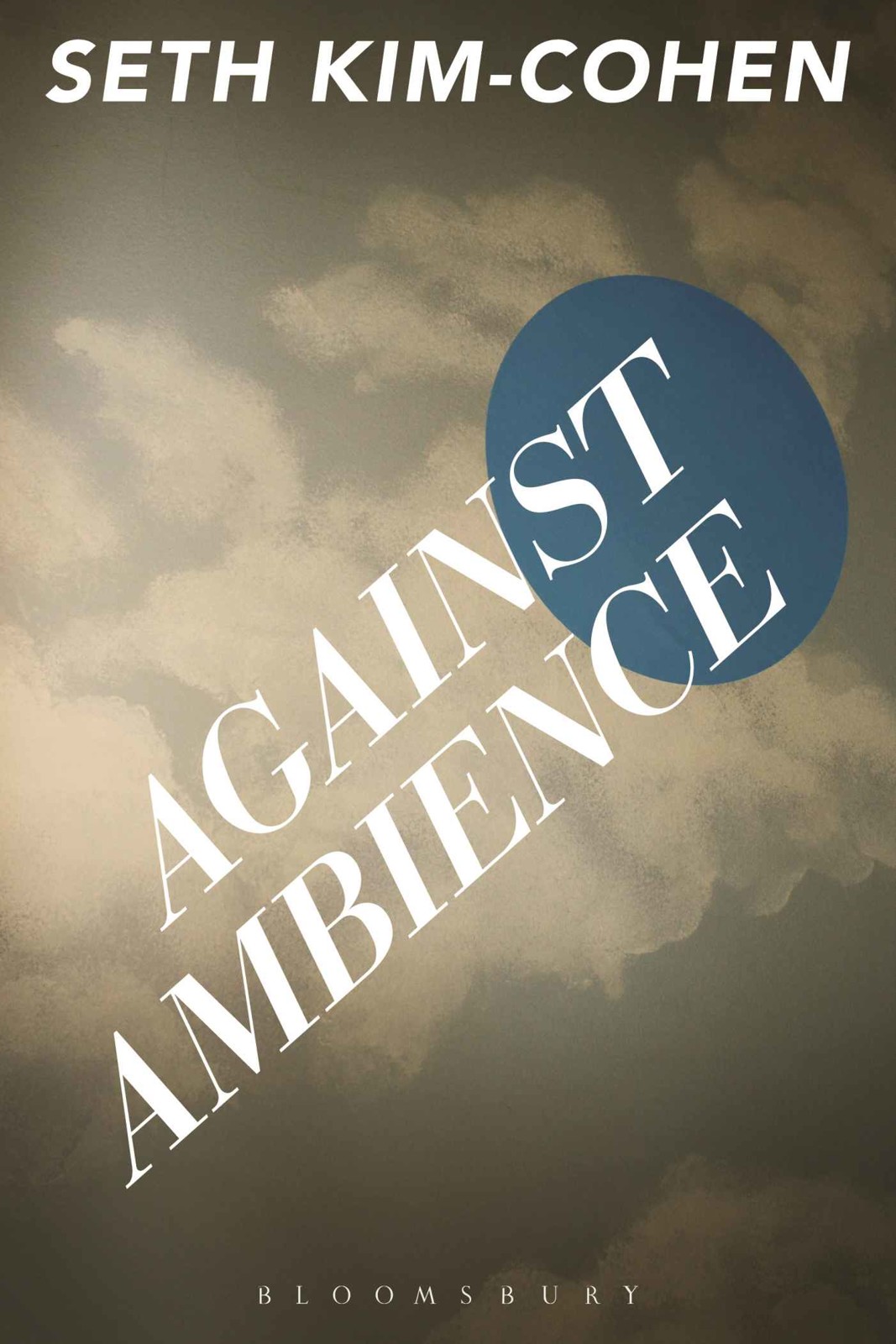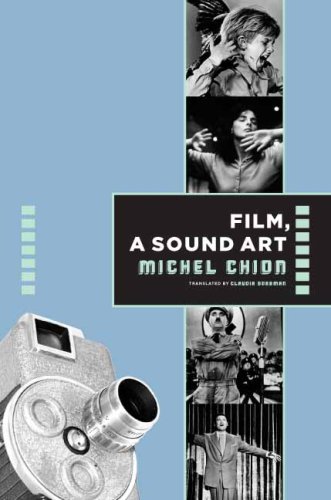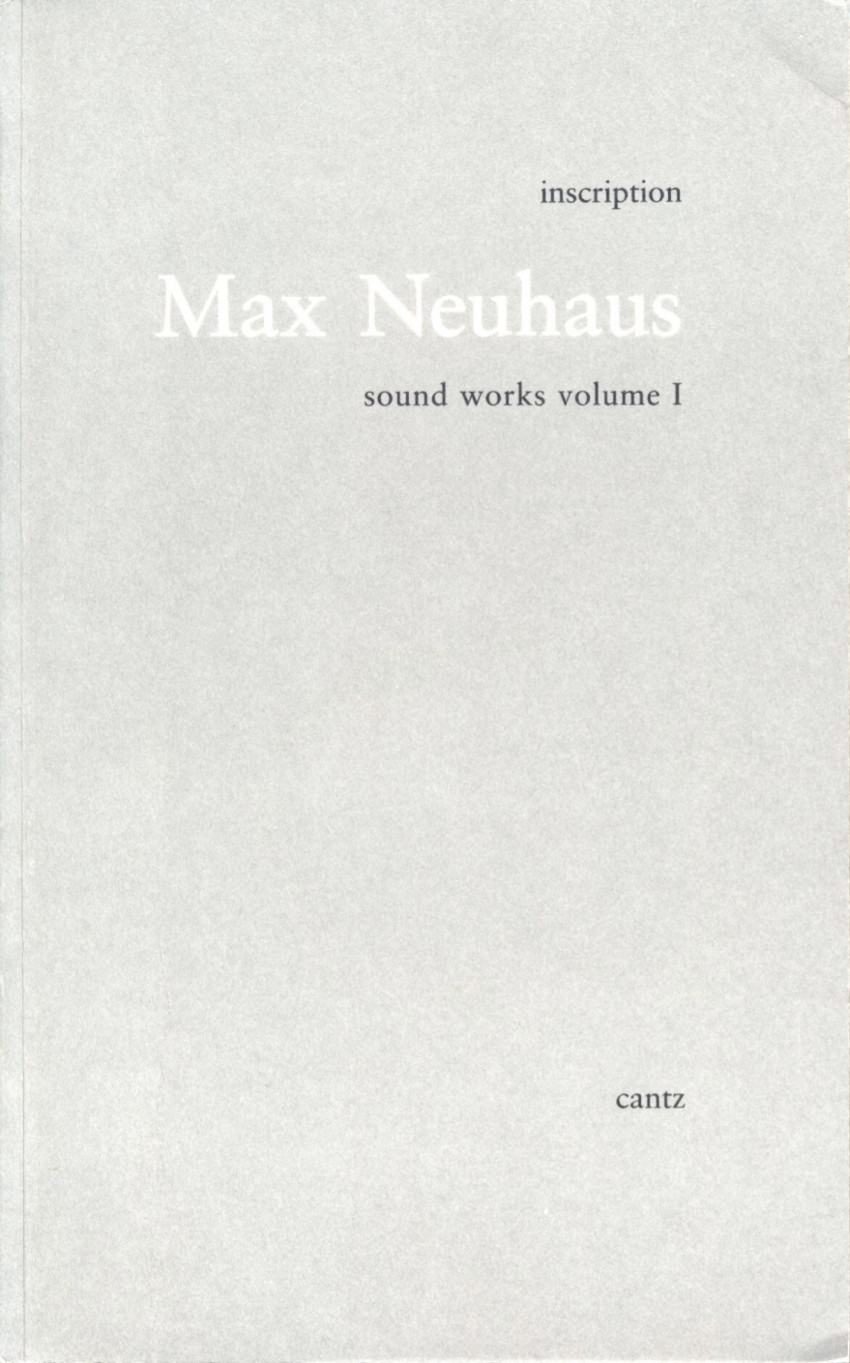Seth Kim-Cohen: Against Ambience (2013)
Filed under book | Tags: · aesthetics, ambience, art, art criticism, sound, sound art

“Against Ambience diagnoses – in order to cure – the art world’s recent turn toward ambience. Over the course of three short months – June to September, 2013 – the four most prestigious museums in New York indulged the ambience of sound and light: James Turrell at the Guggenheim, Soundings at MoMA, Robert Irwin at the Whitney, and Janet Cardiff at the Met. In addition, two notable shows at smaller galleries indicate that this is not simply a major-donor movement. Collectively, these shows constitute a proposal about what we want from art in 2013.
It’s impossible to play possum. While we’re in the soft embrace of light, the NSA and Facebook are still collecting our data, the money in our bank accounts is still being used to fund who-knows-what without our knowledge or consent, the government we elected is still imprisoning and targeting people with whom we have no beef. We deserve an art that is the equal of our information age. Not one that parrots the age’s self-assertions or modes of dissemination, but an art that is hyper-aware, vigilant, active, engaged, and informed.
We are now one hundred years clear of Duchamp’s first readymades. So why should we find ourselves so thoroughly in thrall to ambience? Against Ambience argues for an art that acknowledges its own methods and intentions; its own position in the structures of cultural power and persuasion. Rather than the warm glow of light or the soothing wash of sound, Against Ambience proposes an art that cracks the surface of our prevailing patterns of encounter, initiating productive disruptions and deconstructions.”
Publisher Bloomsbury, 2013
ISBN 9781628921366
Interview about the book (EarRoom, 2013)
Review: Joseph Nechvatal (On Verge, 2014).
EPUB (updated on 2018-7-6)
PDF (added on 2018-7-6)
See also sound art page on Monoskop
Comment (0)Michel Chion: Film, a Sound Art (2003/2009)
Filed under book | Tags: · aesthetics, audiovisual, cinema, film, film history, film sound, film theory, hearing, listening, music, noise, poetics, sound, sound studies, time, voice

“French critic and composer Michel Chion argues that watching movies is more than just a visual exercise—it enacts a process of audio-viewing. The audiovisual makes use of a wealth of tropes, devices, techniques, and effects that convert multiple sensations into image and sound, therefore rendering, instead of reproducing, the world through cinema.
The first half of Film, A Sound Art considers developments in technology, aesthetic trends, and individual artistic style that recast the history of film as the evolution of a truly audiovisual language. The second half explores the intersection of auditory and visual realms. With restless inventiveness, Chion develops a rhetoric that describes the effects of audio-visual combinations, forcing us to rethink sound film. He claims, for example, that the silent era (which he terms “deaf cinema”) did not end with the advent of sound technology but continues to function underneath and within later films. Expanding our appreciation of cinematic experiences ranging from Dolby multitrack in action films and the eerie tricycle of Stanley Kubrick’s The Shining to the way actors from different nations use their voices and words, Film, A Sound Art showcases the vast knowledge and innovative thinking of a major theorist.”
First published as Art sonore, le cinema, 2003
Translated by Claudia Gorbman
Publisher Columbia University Press, 2009
ISBN 0231137761, 9780231137768
536 pages
via johnsonleow
Reviews: Knakkergaard (MedieKultur, 2010), Whittington (Music, Sound, and the Moving Image, 2010), Jaeckle (Quarterly Review of Film and Video, 2011).
PDF (Index missing, 58 MB, no OCR, updated on 2023-3-9)
Comment (1)Max Neuhaus: Sound Works, 3 vols. (1994)
Filed under book | Tags: · art, art criticism, drawing, sound, sound art, space

“Neuhaus’s oeuvre is diverse, ranging from works in the plastic arts, drawings, music, sound walks, communal sound signals, aural spaces composed of communication networks, sound topographies in water, to inventions of sound-producing and dispersing systems and sound applied to problems of urban and personal design. The structure of separate volumes was chosen to clarify: to encompass the oeuvre, while allowing each of its diverse parts to remain distinct on its own ground.
The first volume projects an overview with many voices, including his own. The second articulates some of the issues surrounding his drawings which are unusual partly because of their invisible subject: sound. The third volume contains the works which use sound to transform space into place.” (from the Preface, edited)
Volume I contains texts by Calvin Tomkins, Jean-Christophe Ammann, Carter Ratcliff, John Rockwell, Joan La Barbara, Tom Johnson, Arthur Danto, Wulf Herzogenrath, Harald Szeemann, Alain Cueff, Franz Kaiser, Susanne Weingarten, Denys Zacharopoulos, Doris van Drathen, Germano Celant, interviews with Neuhaus by William Duckworth and Ulrich Loock, and texts and lectures by Neuhaus.
Publisher Cantz, Ostfildern, 1994
ISBN 3893225323
144 & 55 & 79 pages
via Charles
Volume I: Inscriptions (29 MB)
Volume II: Drawings (8 MB)
Volume III: Place (6 MB)
See also Max Neuhaus, Evocare l’udibile / Évoquer l’auditif, 1995.
Comment (0)
